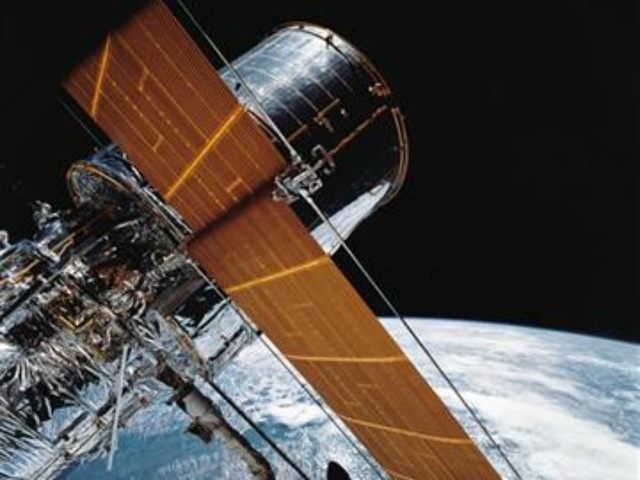Twilight is upon the Hubble Space Telescope, and soon night must fall.
“Just like your car, Hubble is bound to deteriorate without servicing, in the inhospitable void of space,” the Christian Science Monitor explains. “As well as suffering extremes of temperature as its orbit carries it in and out of sunlight, its bodywork is being peppered by meteoroids. And one of the six gyros that keep it oriented properly has failed. This is not a problem in itself as only three are needed for navigation, but it is another sign that Hubble, while in pretty good shape for its age, will not keep operating forever.”
The Hubble still has a few years of operating life, but with the Space Shuttle retired, there’s no longer any way to perform maintenance on the legendary instrument that launched some 13,000 research papers and changed our understanding of cosmic history. After years of theorizing that the universe would expand forever until the last lonely star is swallowed by the infinite void, astrophysicists are back to the “collapsing universe” theory, in which the galaxies will eventually fold back into the tiny speck of super-dense matter from which they came.
At least the end of creation will be warm and bright, and it will be over very quickly – or you might perceive the final collapse as lasting for a trillion years, depending on whether you’re observing the process from inside or outside its insanely powerful gravity field. Either way, be sure to pack your selfie stick, as the scenery will be fantastic.
As for the end of the Hubble, that’s probably about 20 years away, and there is still some debate about whether to let it burn up in Earth’s atmosphere, or retrieve it as a museum piece. (It was actually fitted with a recovery ring during its final maintenance cycle, in case rescue becomes an option.)
NASA is already preparing to launch Hubble’s next-generation replacement in 2018. The James Webb Space Telescope (JWST) is a combined effort of NASA, the European Space Agency, and the Canadian Space Agency with some remarkable features, delivered at a cost of $8.5 billion:
Several innovative technologies have been developed for JWST. These include a primary mirror made of 18 separate segments that unfold and adjust to shape after launch. The mirrors are made of ultra-lightweight beryllium. JWST’s biggest feature is a tennis court sized five-layer sunshield that attenuates heat from the Sun more than a million times. The telescope’s four instruments – cameras and spectrometers – have detectors that are able to record extremely faint signals. One instrument (NIRSpec) has programmable microshutters, which enable observation up to 100 objects simultaneously. JWST also has a cryocooler for cooling the mid-infrared detectors of another instrument (MIRI) to a very cold 7 K so they can work.
That’s right, universe: humans install cryocoolers on our satellites, because space isn’t cold enough for us. That’s how we roll.
CNN describes the JWST as an effort to “peer back to the dawn of time.” Every telescope is a time machine, because it takes so long for light from distant sources to reach the Earth. If we ever do discover signs of intelligent life, which is one of the new telescope’s missions, we’ll be seeing whatever they were up to a couple of hundred years ago.
The James Webb Space Telescope is powerful enough to see up to a hundred times further into space than Hubble could, which means it can see much further back into cosmic history – 13 billion years, give or take a millennium. “Hubble rewrote the textbooks, and we’re planning to rewrite the textbooks again,” NASA spokeswoman Lynn Chandler told CNN. “JWST will answer the questions which at the moment we can’t think to ask.”
In our little Milky Way corner of the universe, JWST will be part of the Nexus for Exoplanet System Science, a vast multi-disciplinary effort to find more worlds that could support life, especially the kind that might be peering back at us across interstellar space.
The James Webb Space Telescope is projected to have a much shorter operating life than the Hubble – only between five and ten years, according to CNN – but our more advanced data processing technology will help it get a lot done with every minute of its comparatively short existence.
Not that Hubble was any slouch in the data department, mind you. That tough old bird cranks out 10 terabytes of data per year. Not too shabby for a satellite that launched seven years behind schedule, took blurry pictures until it was repaired in orbit three years later, and basically challenged every astronaut who tried to work on it to a fistfight. Hubble is both cranky and beautiful… sensitive enough to find cathedrals of luminous gas in the furthest depths of space, tough and ornery enough to live over twice as long as it was supposed to.
The James Webb Space Telescope has some big shoes to fill. Actually, make that steel-toed boots.

COMMENTS
Please let us know if you're having issues with commenting.